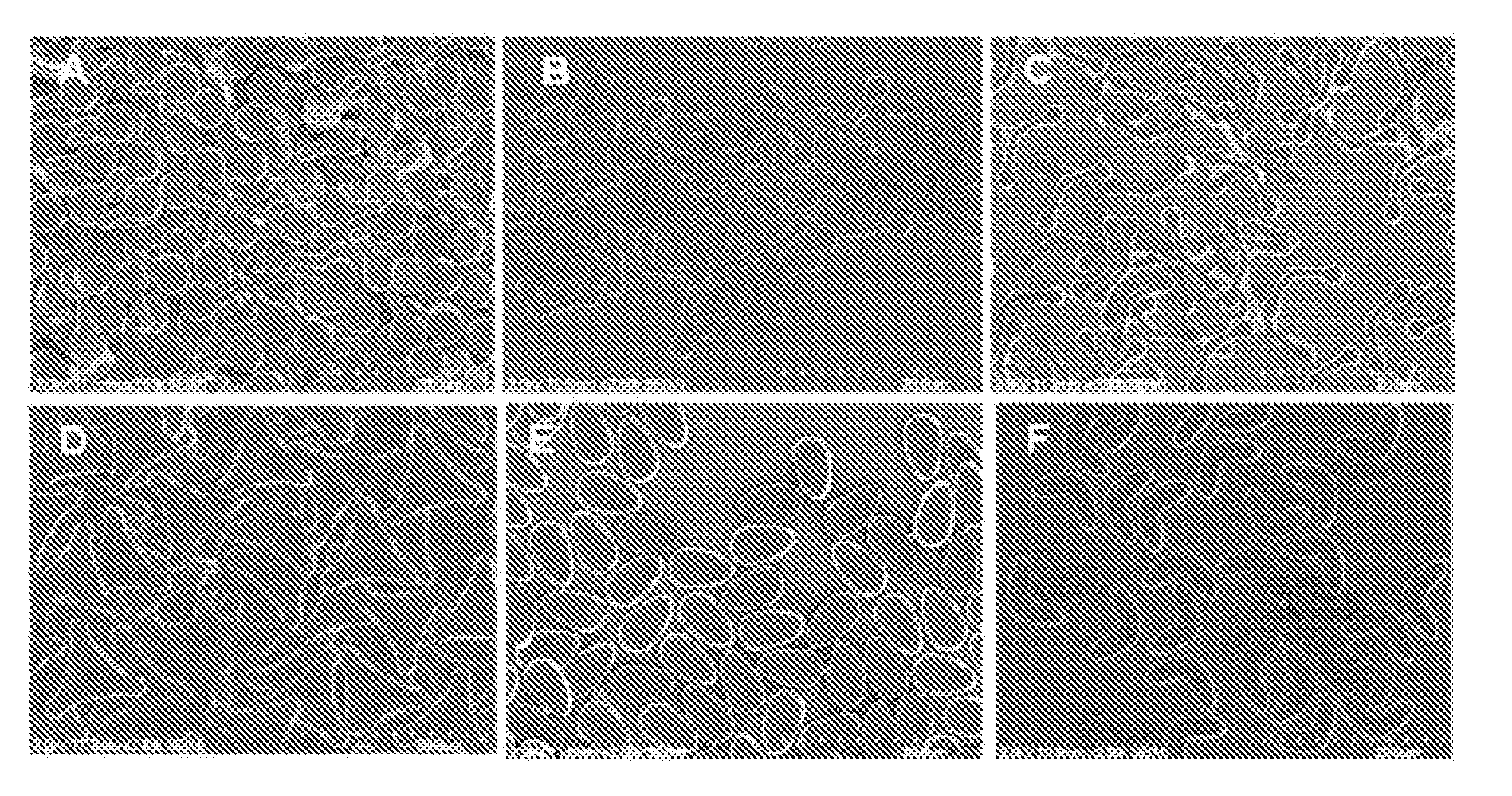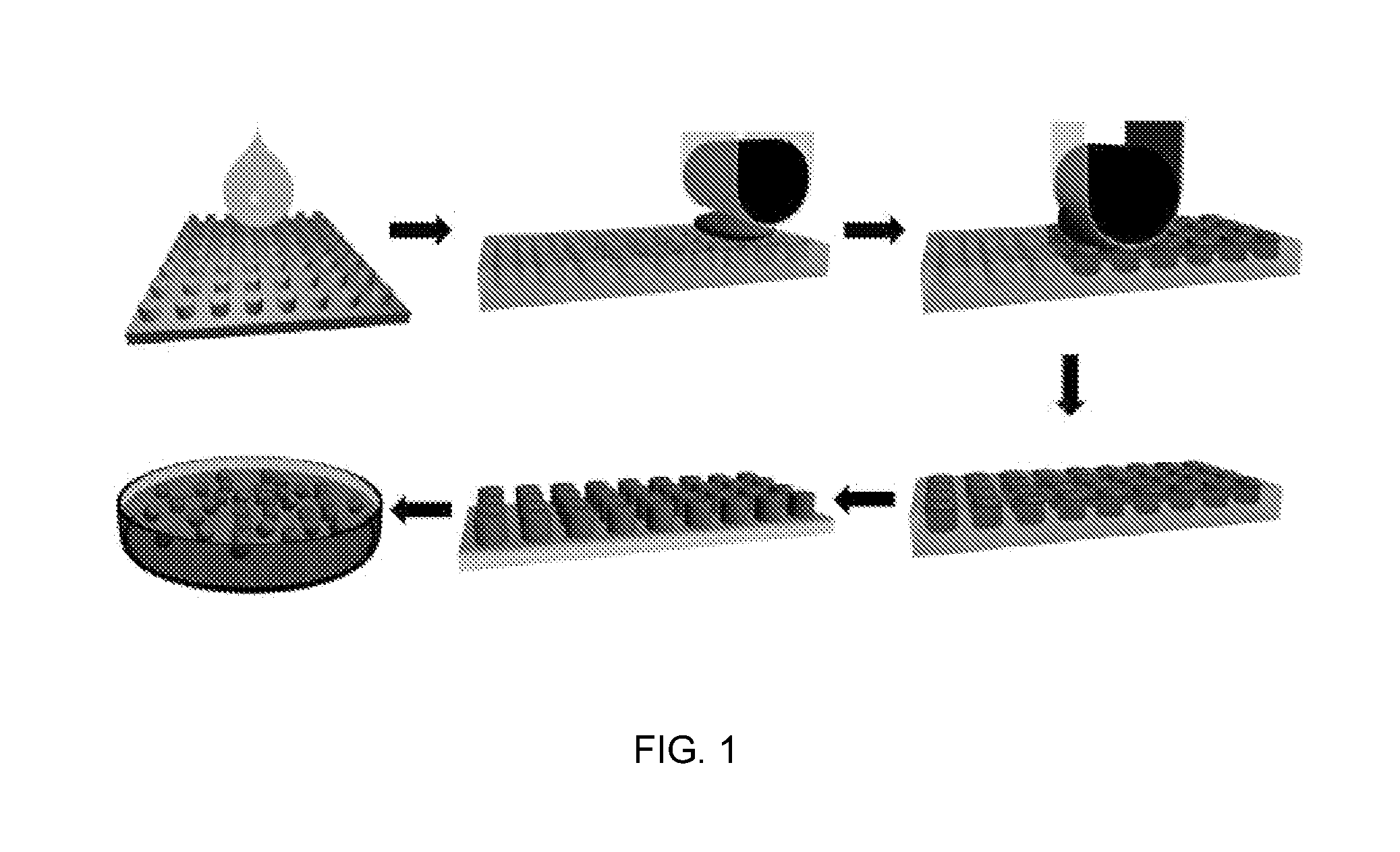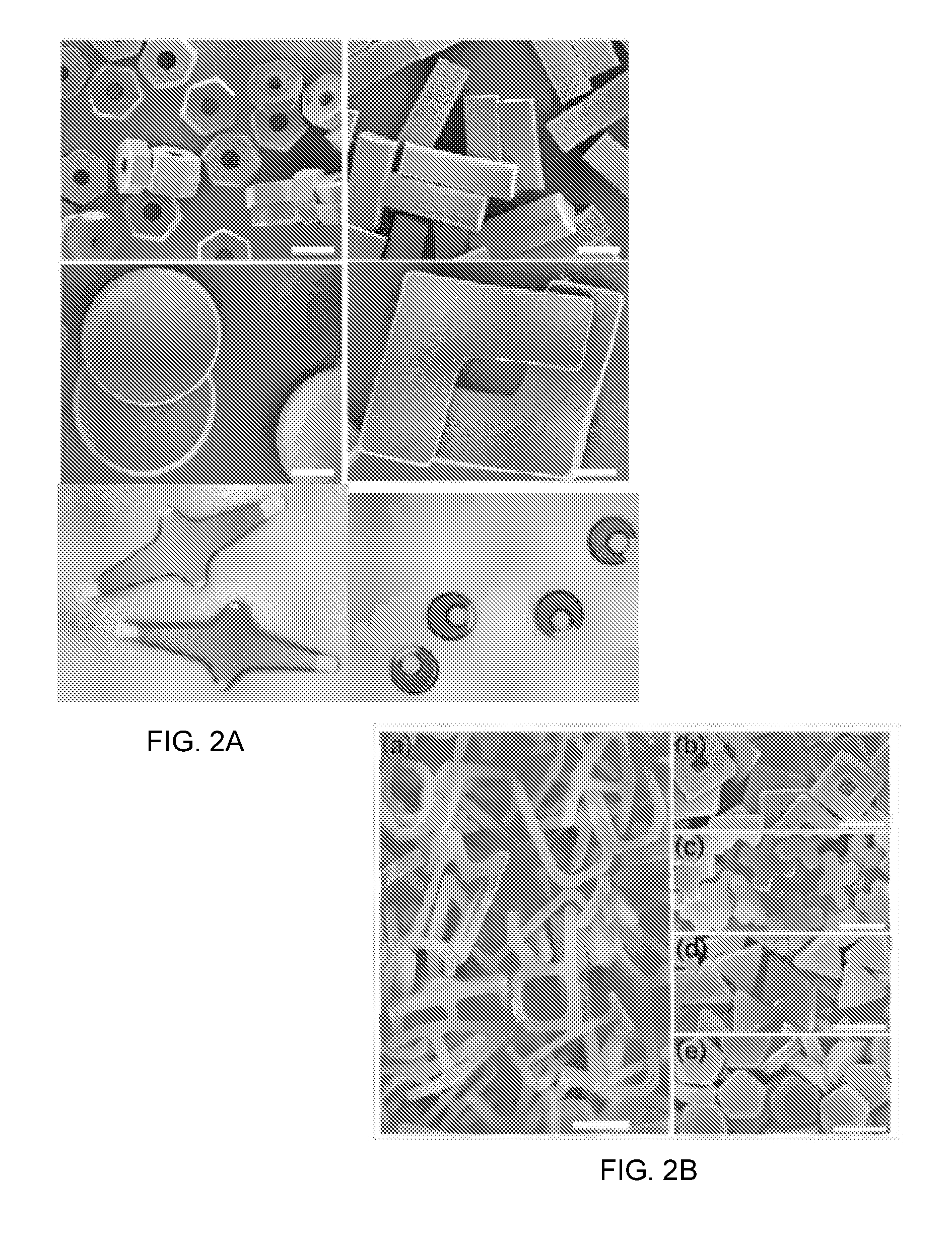Engineered Aerosol Particles, And Associated Methods
a technology of aerosol particles and aerosol granules, applied in the field of engineered particles, can solve the problems of particle design without rifling or autorotation, and achieve the effect of increasing the settling time of the fabricated nanoparticle body member
- Summary
- Abstract
- Description
- Claims
- Application Information
AI Technical Summary
Benefits of technology
Problems solved by technology
Method used
Image
Examples
example 1
Design of Novel Shapes for Engineered Aerosols
[0105]The uniqueness of shaped aerosols as related to PRINT® is its ability to adapt naturally occurring shapes as well as to design novel artificial (or engineered) shapes in order to facilitate enhanced and potentially tunable flight characteristics. This is a key distinction of PRINT® aerosols over that of the standard spherical shapes approximated by most commercially available aerosols. According to one embodiment, design parameters which influence aerodynamic properties include shapes that are:[0106]i. non-spherical;[0107]ii. symmetrical and promote autorotation about a central axis;[0108]iii. asymmetrical and promote tumbling because of an unbalanced center of gravity (CG);[0109]iv. capable of potentially generating lift by inducing leading edge vortices in addition to autorotation or tumbling;[0110]v. fenestrated or that include cavities creating unbalanced CGs and thereby inducing autorotation, tumbling, and / or leading-edge vort...
example 2
Microfabricated Templates for Engineered Aerosols
[0116]Microfabricated templates processed using traditional lithography techniques form the basis of shaped PRINT® aerosols. Master templates for solid shapes were fabricated by exposing SU-8 negative resist (Microchem Corp, Newton, Mass.) to a 365 nm photolithography process on an I-line stepper. High aspect ratio features with fenestrations were resolved using a deep UV (193 nm) scanner (ASML, The Netherlands) on NFR 90 negative resist (JSR Micro Inc, Sunnyvale, Calif.). FIG. 20 illustrates SEM images of microfabricated templates for PRINT® aerosols, wherein: (A) Lollipop; (B) L-Dumbbell; (C) V-Boomerang; (D) Helicopter; (E) Solid Lorenz; (F) Fenestrated Lorenz; (G) Solid Ellipsoid; (H) Fenestrated Ellipsoid.
[0117]Rolls of thin molds were then produced from these master templates using a proprietary technique developed by Liquidia Technologies (RTP Durham, N.C.). These molds allow for the roll-to-roll production of shaped aerosols. ...
example 3
Fabrication of Engineered Aerosols
[0118]The PRINT® process enables the fabrication of micron-sized aerosols. To demonstrate proof-of-concept, 7 different shapes were fabricated from a photocurable PEG hydrogel matrix as shown in FIG. 21. FIG. 21 shows Optical images (A-F) (100×) and SEM (inserts) images (2500×) of shaped PRINT® aerosols, wherein: (A) Lollipops; (B) V-Boomerangs; (C) L-Dumbells; (D) Pollen; (E) Ellipsoids; (F) Helicopters; (G) Lorenz; (H) Mixed.
[0119]While the method of filling and photocuring this monomer in the molds has been previously demonstrated, a novel method of harvesting these aerosols to a PVOH sacrificial harvest layer (under specific temperature and pressure conditions) was developed. Furthermore, the incorporation of fluorescent dye cargo in these particles demonstrates the ability to use the particles as delivery vehicles for other diagnostic and therapeutic agents.
Goal B: Evaluate Aerosol Characteristics
PUM
| Property | Measurement | Unit |
|---|---|---|
| length scale | aaaaa | aaaaa |
| particle size | aaaaa | aaaaa |
| length | aaaaa | aaaaa |
Abstract
Description
Claims
Application Information
 Login to View More
Login to View More - R&D
- Intellectual Property
- Life Sciences
- Materials
- Tech Scout
- Unparalleled Data Quality
- Higher Quality Content
- 60% Fewer Hallucinations
Browse by: Latest US Patents, China's latest patents, Technical Efficacy Thesaurus, Application Domain, Technology Topic, Popular Technical Reports.
© 2025 PatSnap. All rights reserved.Legal|Privacy policy|Modern Slavery Act Transparency Statement|Sitemap|About US| Contact US: help@patsnap.com



